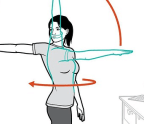
When most of us hear about or see a continuous glucose monitor (CGM) for the first time, the thing that pops into our heads is, “Cool! Now I don’t have to make my finger bleed every time I want to know my glucose level.” And for the most part, that’s true. Except for the occasional calibration or verification, finger-sticks have become a rarity for most CGM users. And you have to admit … it’s pretty cool to just look at a tiny display and know what’s going on inside your body. No blood, no pain, no used test strips embedded in car seats and couch cushions.
But as with most things, the novelty wears off after a while. We become less interested in seeing the numbers and may only spot-check them before meals. And the graphs and trend arrows that seemed cool at the beginning now just take up space on the display screen. Many people shut off the high/low alerts because they become annoying. And downloading? Give me a break.
The fact is, there’s a big gap between using a CGM and really benefiting from it. To use a CGM skillfully is like putting a paintbrush in the hands of Michelangelo. A basketball in the hands of Michael Jordan. A microphone in the hands of Mariah Carey. (You get the idea.) But in this case, the results go beyond art and entertainment. With a little training and finesse, a CGM should enable you to achieve a nice glucose average (and A1C), cut down on hypoglycemia (low blood glucose), and spend lots more time within your target zone.
In other words, it’s time to make your CGM sing for you. Here’s how.






